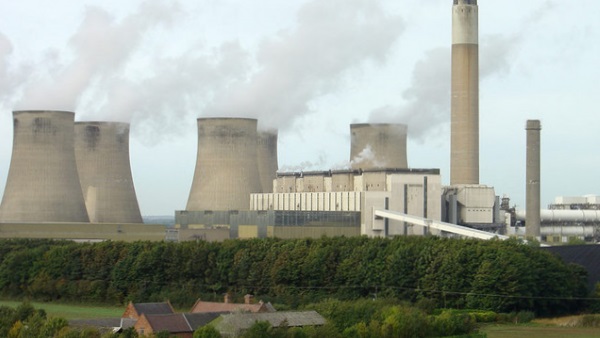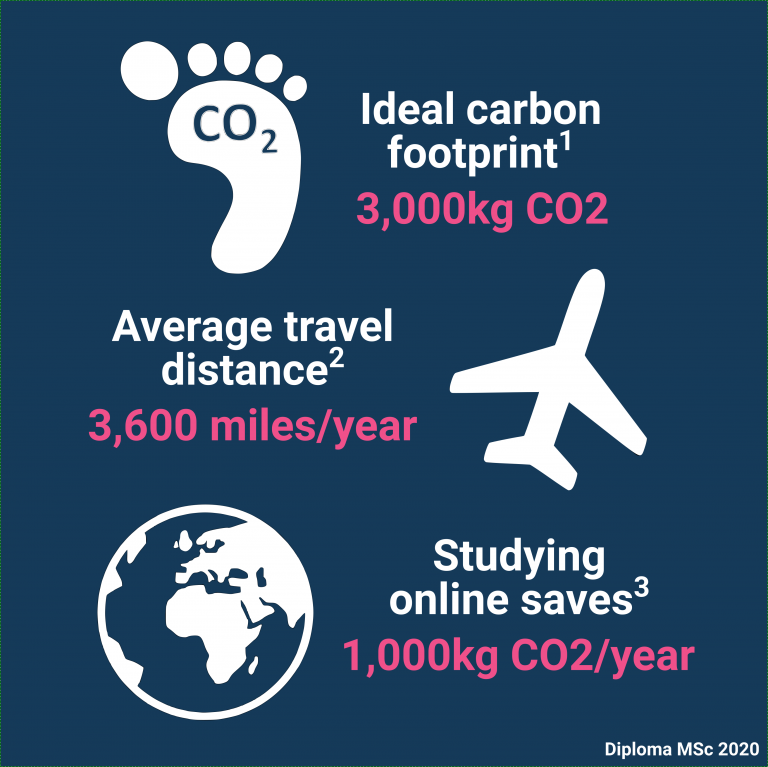There are many reasons to study an online course. Saving the planet probably isn’t the first one that springs to mind. As with many other big purchases, eco-friendliness is often an afterthought when choosing a study route.
But when you think about it, universities actually have a massive impact on the environment. Consider all the students, tutors and other staff that commute to campuses every day.
Add to that the resources it takes to deliver courses, plus the running costs of maintaining and powering campus buildings – and that’s without mentioning what it takes to run student accommodation. Now multiply that by the 120-or so universities in the UK. Then by the 25,000-plus universities worldwide. That’s a lot of energy.

Contrast that with distance learning. Picture a lone person sitting at their lamp-lit desk, no stack of printed learning resources in sight. Just a notebook and a screen. That scene uses much less energy to power than that of a bustling campus filled with classrooms, lecture halls, libraries, gyms, canteens…the list goes on.
We’re not relying on the power of imagination either. The facts speak for themselves: a study showed a 90% difference in emissions, with the average full-time student generating 82 kilos pounds of C02 emissions. The average online student produced just 4 pounds.
Take fuel consumption and we’ll use our own student numbers as an example:

- Assuming students travel just once per year. And let’s assume there’s a 60:40 split between international and UK/EU/Irish students (as is the case with our students), so, out of 1,100 students there would be 660 international students and 440 from the UK/EU/Ireland.
- The average international distance traveled is around 3000 miles (6000 miles return). This makes the total emissions for the 660 international students * 0.3kg CO2/mile * 6000 miles. That’s 1,320 tonnes of CO2..
- The average national distance to travel from an airport is 90 miles (180 miles return). So total emissions = 1100 students * 0.28kg CO2/mile * 180 miles = 55 tonnes of CO2
- Let’s also assume tutors commute 221 days a year. The average UK commuting distance is 8 miles (16 miles return). Total emissions = 221 days * 70 tutors * 0.28kg CO2/mile * 16 miles = 69t CO2.
Using these assumptions, the total CO2 savings are 1444t tonnes per year – or 1.31 tonnes per student through avoiding just one residential event.
That’s just using our own student numbers as an example. Consider that in 2017–18 there were 2.34 million students studying at UK higher education institutions. Think of how much energy would be saved if even a small number of those students chose to study online.

Environmental impact is one of the key reasons we formed Diploma MSc. We wanted to realise our vision of a low carbon footprint, totally online learning platform. Our objective was to offer affordable qualifications to the global healthcare community without the CO2 emissions from travel, energy and infrastructure associated with campus-based learning.
This had never been done in a healthcare environment before. But why shouldn’t healthcare professionals be able to learn with little more than an internet connection? The resources were there, but the assumption had been that these specialties were too ‘hands-on’ to ever make our vision a possibility.
However, in the last 20 years, evidence-based practice has been one of the most important developments in healthcare. Our objective was to upskill students in the management of typical clinical scenarios through interpretation of the evidence, assisted by online tutors.

Unlike traditional courses with summer schools, our courses are both academically and environmentally disruptive.
Education should leave a legacy – but not on the planet. You can make a difference by choosing online education.
Choose your online course now.
Infographic References:
Ideal carbon footprint of 3 tonnes: United Nations Department of Economic and Social Affairs (UNDESA), 2011. World Economic and Social Survey 2011 – The Great Green Technological Transformation, Chapter 2.On line:
http://www.un.org/en/development/desa/policy/wess/wess_current/2011wess_chapter2.pdf
Average international travel distance: https://iopscience.iop.org/article/10.1088/1748-9326/ab33e6
CO2 per airmile 0.29kg CO2/mile: http://www.carbon-calculator.org.uk/
